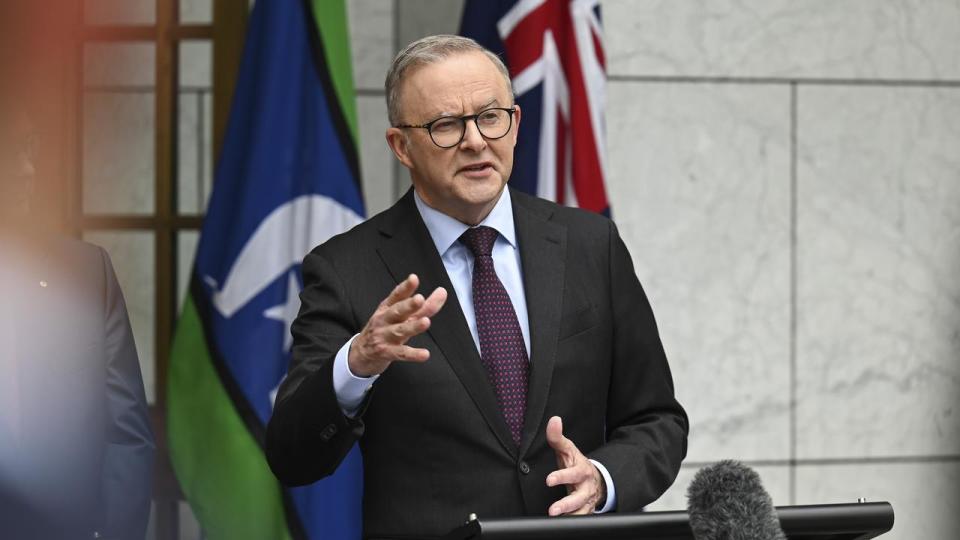How much Aussies will get from tax cut

The Albanese government is poised to overturn its pledge to deliver the stage three tax cuts in full as it seeks to assist low and middle income earners facing the ongoing cost-of-living crunch.
But while all Australians will receive a tax cut under the Albanese government’s updated tax package, set to begin on July 1, the benefit taxpayers receive relative to the original stage three tax cuts will vary.
Indeed, about one million taxpayers who earn more than $150,000 will be up to $4500 worse off under the Albanese-era tax package.
Meanwhile, the roughly 14 million taxpayers earning less are set to receive greater benefits of up to $800 as the tax cuts on lower brackets will be more generous than previously designed.
What is about to change?
Under the current tax system, the first $18,200 earnt by workers is tax-free. After that, workers are taxed at 19 per centup to $45,000.
The tax rate jumps to 32.5 per cent for earnings between $45,000 and $120,000 and rises again to 37 per cent on wages earnt up to $180,000.
The top marginal tax rate sits above $180,001, where earnings are taxed at 45 per cent.
The original stage three tax cuts were the final tranche of the Morrison government’s 2019 plan to address bracket creep, which Labor endorsed and recommitted to during the 2022 election.
Under the original iteration of the tax changes, the 37 per cent tax bracket on income earnt between $120,000 and $180,000 would have been abolished.
Instead, a 30 per cent tax rate would have applied to all earnings between $45,000 and $200,000, and the threshold for the top marginal tax rate would have kicked in at $200,000, up from $180,000, at a level of 45 per cent.
But after being reportedly rubber stamped by cabinet on Tuesday, the tax cuts, which were due to begin on July 1, are poised to be overhauled.
It’s understood the Albanese government’s iteration of the stage 3 tax cuts will retain the tax-free threshold at its current rate, lower the tax rate on incomes up to $45,000 to 16 per cent – down from 19 per cent – and lower the $45,000 to $135,000 tax bracket to 30 per cent – down from 32.5 per cent.
Additionally, the 37 per cent tax bracket will be retained between $135,000 and $190,000, after which the top marginal tax rate will then kick in at $190,000 at a 45 per cent rate.
What do the changes mean for me?
If passed by the parliament, all earnings between $45,000 and $135,000 will receive an extra $804 than they otherwise would have under the Morrison tax plan.
Earnings less than $45,000, which would not have received relief under the original plan, are now in line for a tax cut.
For income earners below $45,000, the tax cut received will fall from $804 at the top end of the bracket to $0 as their earnings reduce to $18,200.
While this is good news for low- and middle- income earners, it’s coming at the cost of additional relief for those on higher incomes.
By keeping the 37 per cent tax bracket at $135,000, the tax cuts above $150,000 will be less.
For example, a worker earning $150,000 will be $246 worse off under Labor’s tax package.
The severity of the tax changes will steadily increase from there, meaning a worker making $200,000 a year will be $4,546 worse off in the 2024-25 financial year.
Rather than receiving a $9075 tax cut as they would have under the Morrison plan, a worker earning $200,000 will now receive $4529.
While opponents of the stage three changes cited the excessive cost of implementing them, the updated tax package will cost even more than the original package’s $300bn 10-year price tag.
The changes will mean an additional $9bn in foregone revenue over the four-year forward estimates period, however this cost will fall to $6bn over the next decade according to Parliamentary Budget Office calculations.

 Yahoo Finance
Yahoo Finance 